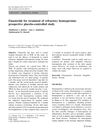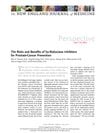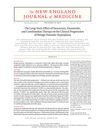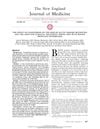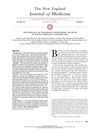5-Alpha-Reductase Inhibitors and Combination Therapy
July 2016
in “
Urologic Clinics of North America
”
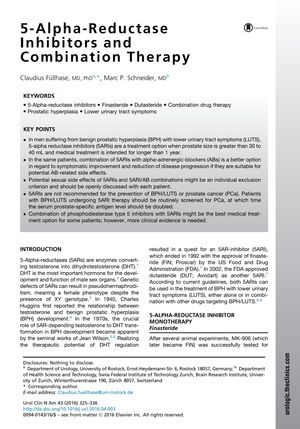
TLDR Finasteride and dutasteride are effective for long-term treatment of enlarged prostates but have sexual side effects and a risk of high-grade prostate cancer.
The document from August 1, 2016, highlights the use of 5-alpha-reductase inhibitors (5ARIs), specifically finasteride (FIN) and dutasteride (DUT), in treating benign prostatic hyperplasia (BPH) with lower urinary tract symptoms (LUTS). It recommends these treatments for men with a prostate size greater than 30 to 40 mL and for durations exceeding 1 year. Combination therapy with 5ARIs and alpha-blockers (ABs) is more effective for symptom improvement and disease progression reduction in men with moderate to severe BPH/LUTS, particularly with enlarged prostates. However, there is an increased risk of sexual side effects, which should be communicated to patients. The document also notes that while 5ARIs can reduce prostate cancer incidence by about 25% with FIN and 22% with DUT, they are associated with a higher risk of high-grade prostate cancer, leading the FDA to advise against their use for prostate cancer prevention. Patients on 5ARI therapy should be screened for prostate cancer, with PSA levels adjusted for accuracy. The potential benefits of combining 5ARIs with phosphodiesterase type 5 inhibitors (PDE5Is) require further research. Overall, FIN and DUT are effective long-term treatments for BPH/LUTS in men with prostatic enlargement, but not recommended for those without it.

